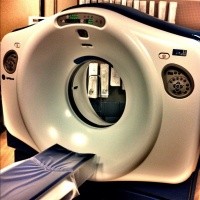Author Interviews, Brain Injury, Exercise - Fitness, Nature, Science / 11.08.2019
Football: One Season of Play Linked to Midbrain Damage, Even Without Concussion
MedicalResearch.com Interview with:
Adnan Hirad, PhD
MD Candidate, Medical Scientist Training Program
University of Rochester
School of Medicine and Dentistry
MedicalResearch.com: What is the background for this study?
Response: Concussion is defined based on the manifestation of observable signs and symptoms (e.g., dizziness, difficulty with concentration, loss of consciousness, inter alia). A non-concussive head injury is when someone hits their head but does not exhibit the signs and symptoms of concussion -- IE concussion is defined by observable signs, and sub-concussive is defined as sustaining head impacts similar (in magnitude and mechanism) to those sustained with concussion without observable signs and/or symptoms. These hits are a problem not only in football, but also with IED/bomb blasts experienced during war and potentially rugby.
(more…)


















 Sean C. Rose, MD
Pediatric sports neurologist and co-director
Complex Concussion Clinic
Nationwide Children’s Hospital
Assistant professor of Pediatrics
The Ohio State University
MedicalResearch.com: What is the background for this study? What are the main findings?
Response: The link between sub-concussive head impacts and declines in neurocognitive function has been reported by some studies, yet refuted by others. There is very little evidence that has been collected in children as they are sustaining these head impacts.
We initiated a multi-year study of youth football players to provide a more in-depth look at the question. We measured head impacts using helmet sensors during the 2016 football season. 112 players age 9-18 completed a battery of neurocognitive tests before and after the football season.
We found that neither the total burden of head impacts nor the intensity of individual impacts were associated with changes in testing performance from pre to post-season.
Sean C. Rose, MD
Pediatric sports neurologist and co-director
Complex Concussion Clinic
Nationwide Children’s Hospital
Assistant professor of Pediatrics
The Ohio State University
MedicalResearch.com: What is the background for this study? What are the main findings?
Response: The link between sub-concussive head impacts and declines in neurocognitive function has been reported by some studies, yet refuted by others. There is very little evidence that has been collected in children as they are sustaining these head impacts.
We initiated a multi-year study of youth football players to provide a more in-depth look at the question. We measured head impacts using helmet sensors during the 2016 football season. 112 players age 9-18 completed a battery of neurocognitive tests before and after the football season.
We found that neither the total burden of head impacts nor the intensity of individual impacts were associated with changes in testing performance from pre to post-season.









